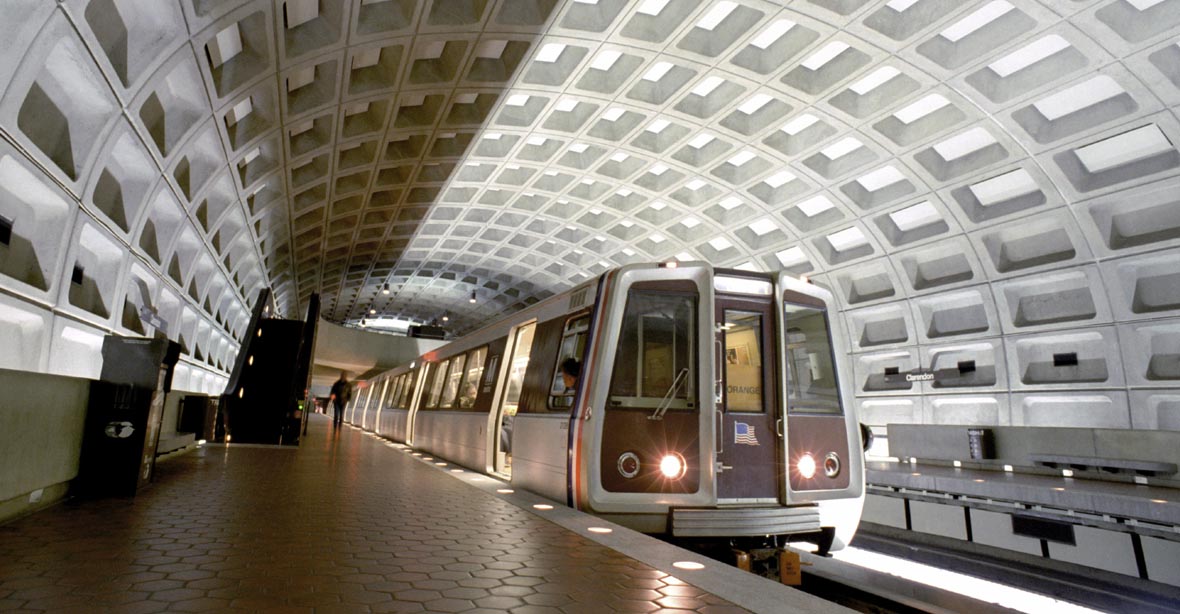Washington is increasingly sad about its increasingly deteriorated Metro system, with riders seeing delays and danger as emblematic of our nation’s infrastructure woes.
The good news is that Metro’s problems aren’t that hard to fix.
“Metro’s day-to-day woes aren’t financial, and throwing money at that problem rather than investing in Metro’s longer-term needs for things such as new tunnel capacity would make the day-to-day problems worse.”
At a congressional hearing this month on Metro’s failures, Rep. Gerald E. Connolly (D-Va.) lamented Metro’s “decade-long descent into mediocrity.” Frequent visitors can see the startling changes: longer waits with no explanation, more broken escalators.
The numbers back the observations up. Last year, Metro’s on-time performance fell by nearly 8 percentage points. But what commuters hate most is unpredictability: One day the train is on time; the next day, you wait 20 minutes. Reliability fell by 13 percent.
And last year, 61-year-old Carol Glover was the ninth Metro passenger to die in less than a decade. Ten Metro employees have died, too, with Metro and its overseers missing the earliest of these tragic employee deaths as the harbingers of safety problems that would eventually kill passengers. Last year,employee injuries were up 30 percent. A private company with this workplace-safety track record would be out of business.
Metro’s advocates have pointed to these woes as evidence that Metro needs money. That’s true, but Metro’s day-to-day woes aren’t financial, and throwing money at that problem rather than investing in Metro’s longer-term needs for things such as new tunnel capacity would make the day-to-day problems worse.
Reps. John L. Mica (R-Fla.) and Mark Meadows (R-N.C.) were right to deny Metro management a new $300 million annual operating subsidy. Metro’s operating costs are too high. In 2014, Metro spent nearly $7 per passenger trip — nearly 40 percent higher than New York City’s costs.
Nor was Metro’s most recent high-profile problem — the electrical fire that led to a system shutdown— a result of financial woes. Metro’s workers and contractors didn’t put protective sleeves on electrical cables. That’s not a matter of money but of competence.
Metro can get its performance up and its costs down through better efficiency and better contracts with unions. Metro pays 85 percent of its biggest union’s health-care benefits in retirement, for example, something few private-sector workers get.
But the hearing showed how not to do this. Rep. Barbara Comstock (R-Va.) referred to Metro employees as “deadwood,” and Metro management, too, focused too much on firing people.
If Metro has to do layoffs, then it has to, but too many employees and unproductive employees are Metro’s fault, not the workers’. Demonizing people who might lose their jobs won’t help performance.
Metro does need money for capital spending: not only for expansion projects such as the Rosslyn tunnel but also for normal repair and replacement for a system that’s now 40 years old.
Metro has the same problem now that New York had in the late 1970s and early 1980s: Its system is old and needs rebuilding.
The good news here is that in contrast with New York, Metro has very little debt — laughably little, in fact. Metro could prudently borrow to pay for its long-term capital expenditures, taking out 30-year bonds, for example, to pay for assets that will last 30 years. And with interest rates at record lows, it’s a good time to do it. In turn, someone would have to pay these new debt-service costs, a few hundred million a year, most likely, for an ambitious 10-year capital plan.
That’s where federal money should come in — permanently and consistently, not just in a crisis. At the hearing, Meadows seemed to suggest that because the federal government paid for most of Metro’s initial construction costs and has helped pay for new train cars and other big purchases since then, it has done its job. That’s not how big infrastructure works. You don’t build it once and walk away; you keep building it forever, just like your house needs new paint and a new roof every once in a while to stay in working order. It needs constant smaller-scale maintenance, too, such as new appliances.
Here, too, New York is a good example. Starting nearly four decades ago, New York’s business community largely paid, through special new taxes, for the rebuilding of its subway system. In Washington, the federal government is the business community.
Problem solved, then: Metro can work on its operating costs, and the federal government can pay for most, if not all, of Metro’s long-term capital plan.
Will it happen? Maybe, maybe not. If it doesn’t, it’s not because the problem is too hard.
This piece originally appeared in The Washington Post
This piece originally appeared in The Washington Post
